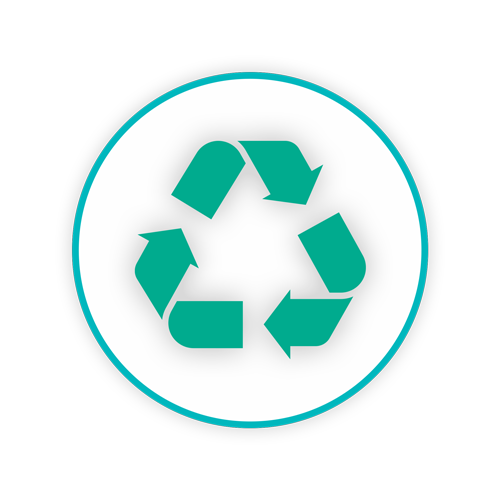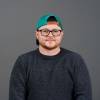The Life Journey of Our Reusable Sharps Containers

Where do reusable sharps containers come from? What happens to them when they’re finished with? Are they recycled?
Reusables bring about proven carbon footprint reductions throughout their life cycle, but they also give rise to questions like those above. To feed two birds with one fat ball (we don’t agree with stone-throwing…) let’s take a closer look at the life journey of reusables and their environmental impact.
TOPICS WE WILL COVER:
1 / The Life Journey of our Reusable Sharps Containers
2 / The Conception: Raw Materials
3 / The Birth: Manufacturing Process
4 / The Childhood: Distribution and Use
5 / The Adulthood: Maintenance and Cleaning
6 / The Death Bed: End-of-Life Options
7 / The Afterlife: Recycling Process
8 / The Legacy: Environmental Impact and Benefits
9 / Do you want to Leave an Environmental Legacy?
The Life Journey of Our Reusable Sharps Containers
It’s safe to say that all reusables have a life span that significantly outperforms that of any single-use container, but when it comes to precise figures we can best speak to our own safety-engineered devices.
Sharpsmart reusables are certified for 500 uses with an average lifespan of over 65 years (based on average reuse of 7.4 times per year) before reaching the end of their life, but spoiler alert… When our reusables reach the end of their life as a sharps bin, it’s not the end of their life as a plastic. So without further ado, let’s take a whistle-stop tour of the life journey of our reusable sharps containers.
The Conception: Raw Materials
The life journey begins with sourcing the raw materials, extracting and using them to create the ABS polymer plastic. Because durability plays an important role in a reusable’s life, the pelletised ABS polymer goes through a careful selection process before it’s used to manufacture and produce the containers as we know and recognise them – leading us to the birth.
 The Birth: Manufacturing Process
The Birth: Manufacturing Process
We create our containers using injection moulding methods that transform the pelletised ABS plastic into our easily-recognisable safety-engineered devices with their signature yellow body colour. Each one has to pass stringent quality control checks to ensure they meet the compliance standards for reusable sharps containers – BS EN ISO 23907-2:2019.
Fun fact: Sharpsmart set the standard for ISO-accredited reusable sharps containers. Well, we thought that was fun…

The Childhood: Assembly, Distribution, and Use
We use the manufactured parts to assemble each container and they’re prepared for distribution from our warehouses either to our plants or directly to our customers’ sites.
Once in use in whichever healthcare environment they’re distributed to, they work hard to carry out the Sharpsmart mission of making healthcare safer – as has been the case during our Partnership with Peterborough Hospital – 10 years with 0 reports of a disposal-related sharps injury and a significant reduction of NSIs sustained at the point of care.
We never use a third-party transporter to distribute or collect, enabling us to keep a true and accurate record of their carbon footprint throughout the entire life cycle.

The Adulthood: Maintenance and Cleaning
We cannot overstate the importance of this part of a reusable’s life – the proper cleaning and maintenance of containers is integral for maintaining compliance and being safe from the risk of injury or infection. Our industry-leading robotic Washline technology cleans our reusables in an eight-step process which exceeds decontamination requirements without using environmentally harmful chemicals. Once the Washsmart has achieved complete microbiological sanitisation, each container has to pass a strict quality assurance test for approval before they’re signed off for reuse.
The Death Bed: End-of-Life Options
When it comes to that sad time of a container reaching the end of its life, it needs to get its affairs in order and this includes looking at end-of-life options – for our reusables, there are two:
- The reuse of good working parts.
-
The recycling of any damaged parts.
You’ll notice that incineration or landfill aren’t options…
The first option pretty much speaks for itself, we strip off and clean any good working parts and keep them in a stockpile for building containers using consolidated parts. As for the parts that have seen better days and can no longer live up to the high-quality control measures, they’re cleaned and sent away for recycling. And that leads us into the afterlife…
The Afterlife: Reuse and Recycling
When a container reaches the end of its life, a lot of the parts are still in good working order such as the latches, liner, tray, and lid. As mentioned, we stockpile the good parts and transport them in bulk to our assembly facility. In fact, whether the parts are going for reuse or recycling, they’re always stockpiled and sent in bulk using internal transporters to keep our carbon emissions as low as possible. We clean the failed parts and take them to trusted partner sites for recycling, they’re shredded and granulated into smaller pieces before they’re recycled into a variety of different products. Due to the nature and durability of ABS plastic, it’s most often transformed into non-visible automotive products such as air condition units and internal door components, as well as other under-bonnet applications.
The Plastic Recycling Process
The plastic recycling process is made up of three main stages:
- Shredding/Grinding – Plastic products are segregated and ground into smaller pieces to create a pure stream of material.
- Extrusion – Plastic regrind is melted and extruded into new pellets.
-
New Products – The uniform plastic pellets are used to make new products.
As we stated at the outset when our reusables reach the end of their life as a sharps bin, it’s not the end of their life as a plastic – they also leave behind a legacy…
The Legacy: Environmental Impact and Benefits
The positive environmental impact of reusable sharps containers leaves a long-lasting legacy of impressive reductions in waste, plastic, energy consumption, and carbon emissions achieved year after year. The Rotherham NHS Foundation Trust experienced dramatic CO2 and cost reductions when they introduced reusables and annually:
- Reduced carbon footprint by 109.8 tonnes of CO2e – a 91% reduction.
- Diverted 13 tonnes of plastic from high-temperature incineration.
-
Removed 1.3 tonnes of cardboard.
A huge part of the legacy of reusable sharps containers is how they enable waste prevention and reduction as soon as they’re implemented – reducing your reliance on single-use plastics and virgin plastics disposed of via high-temperature incineration.

Do You Want to Leave an Environmental Legacy?
Taking action to improve waste management and work towards waste reduction is crucial for any organisation looking to leave a long-lasting legacy of sustainability. At Sharpsmart, we’re committed to supporting healthcare organisations on the route to Net Zero and when it comes to procurement, it’s advised to gain an understanding of the full life cycle of the products you’re considering. Implementing reusable sharps containers is a highly effective way to drastically reduce your carbon footprint and we’ve helped many of our partners achieve results that exceeded their expectations.
Would you like to know the impact you could have by introducing our reusables into your facility?
